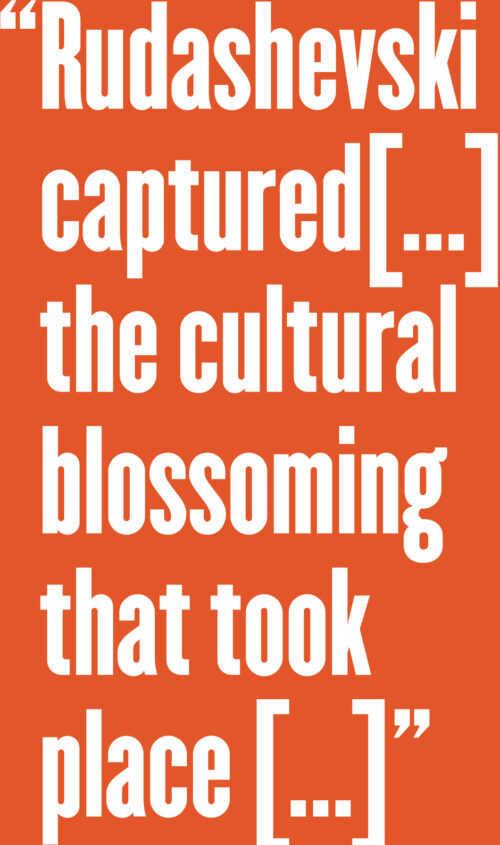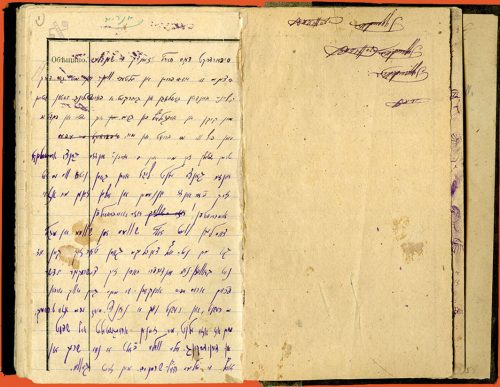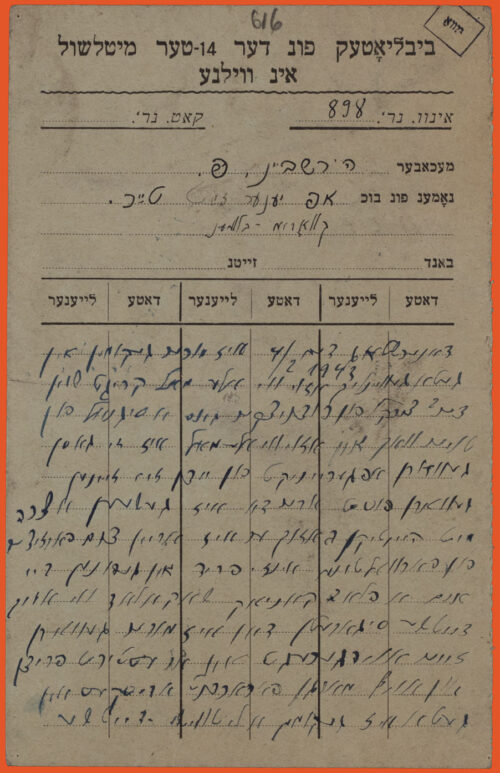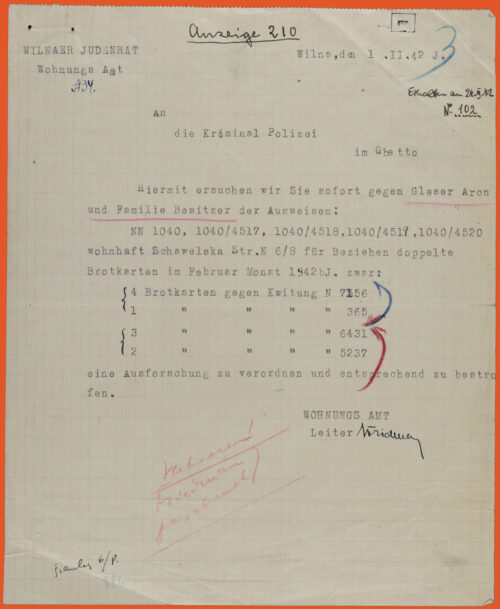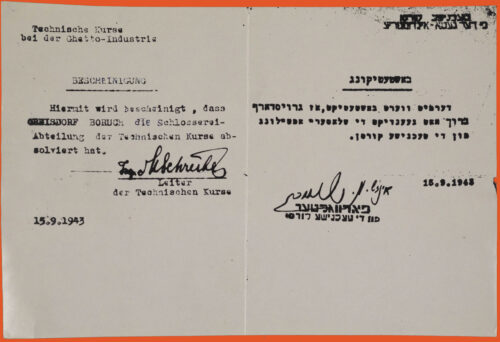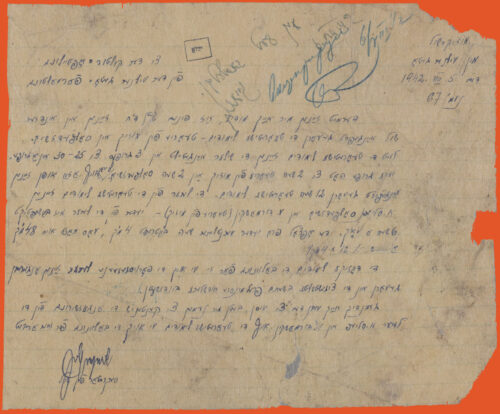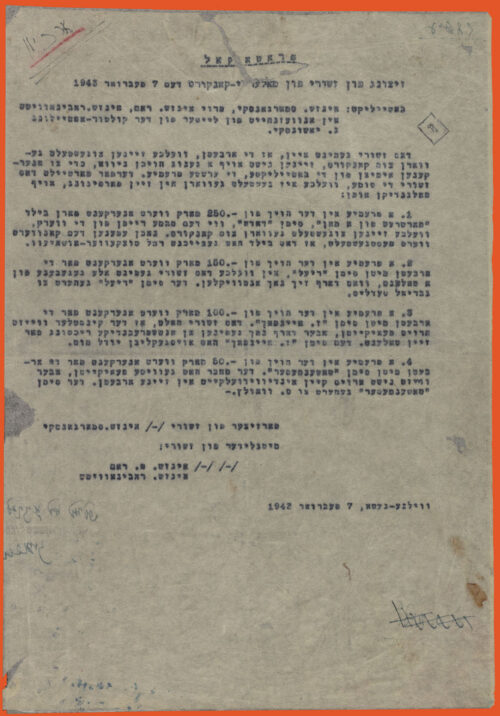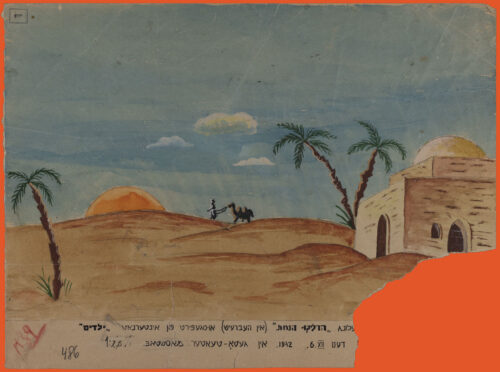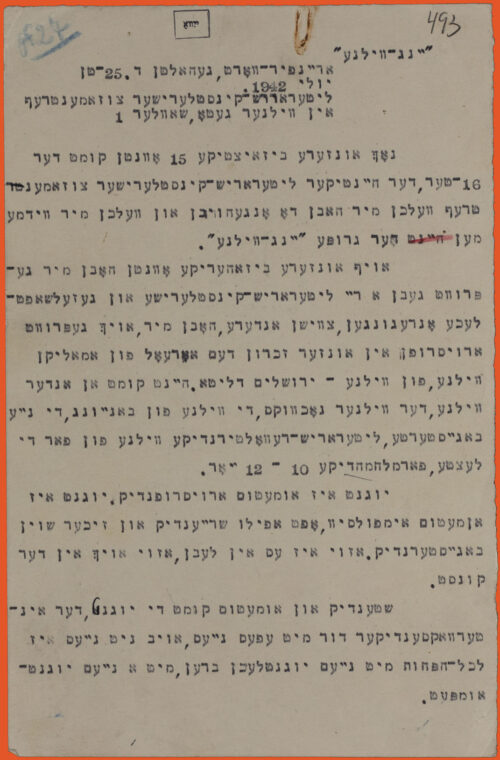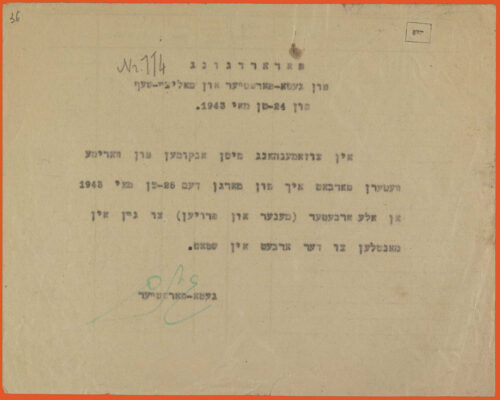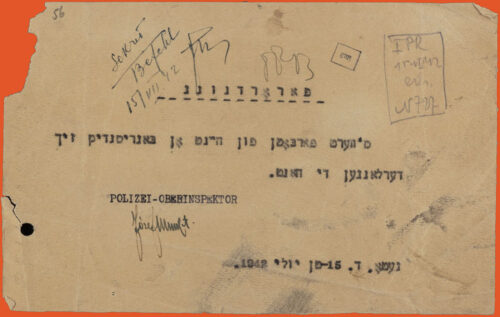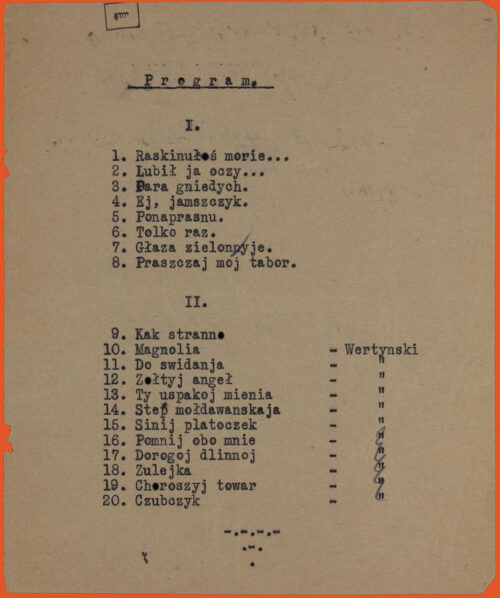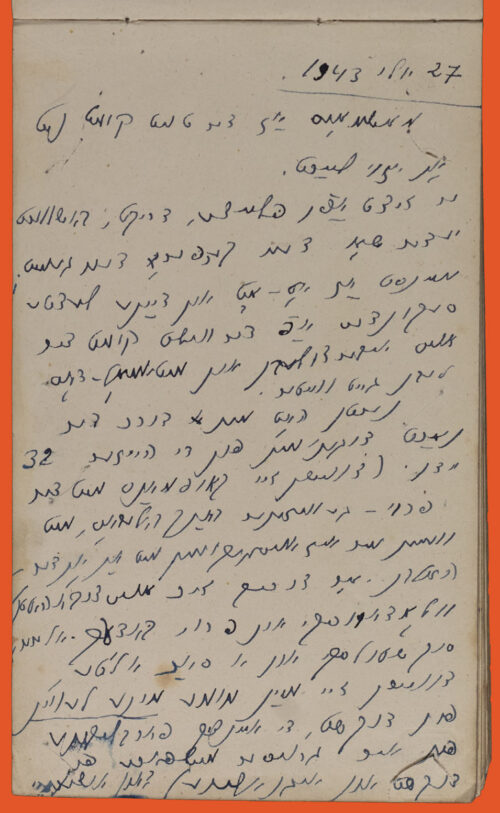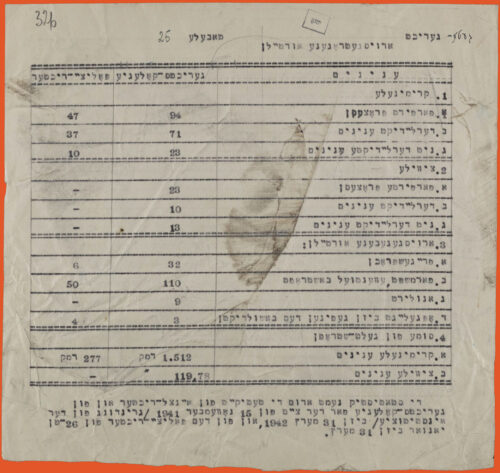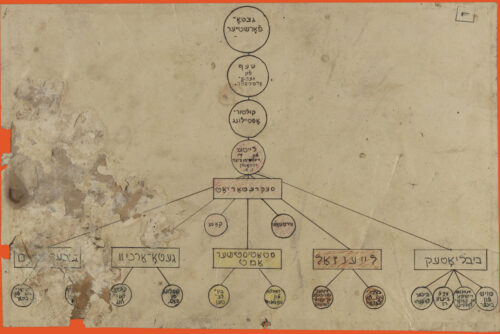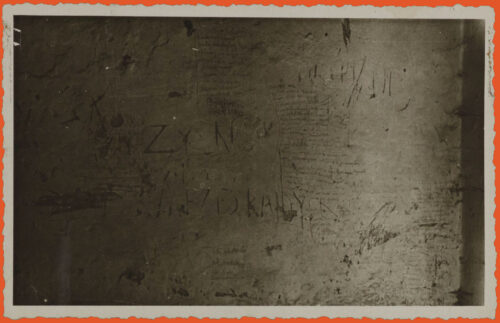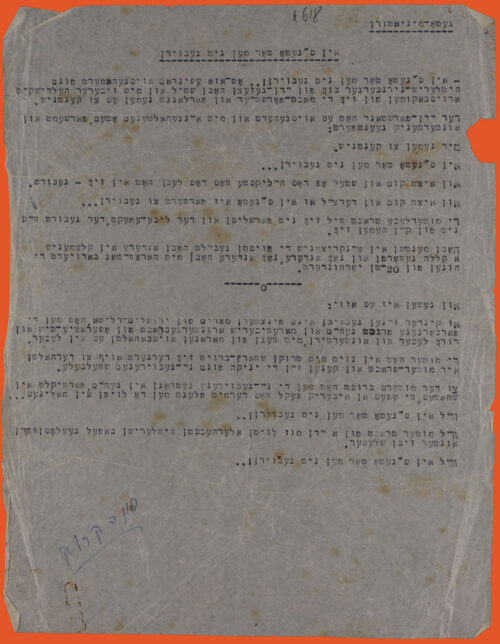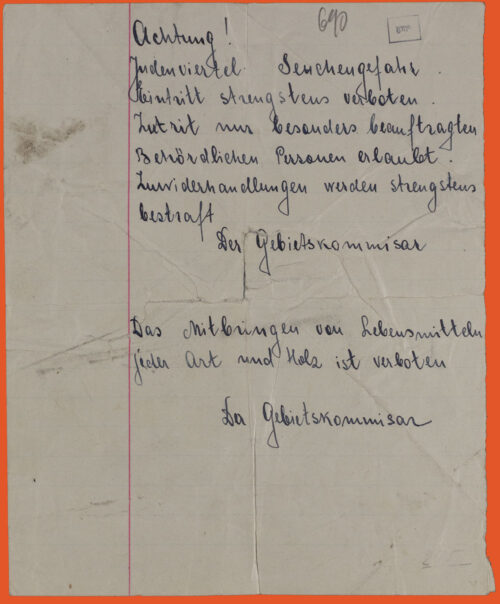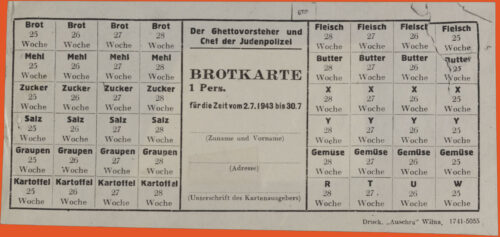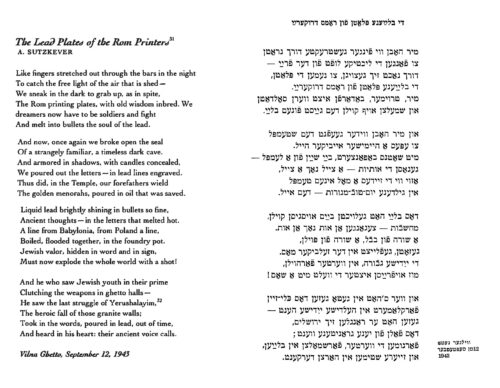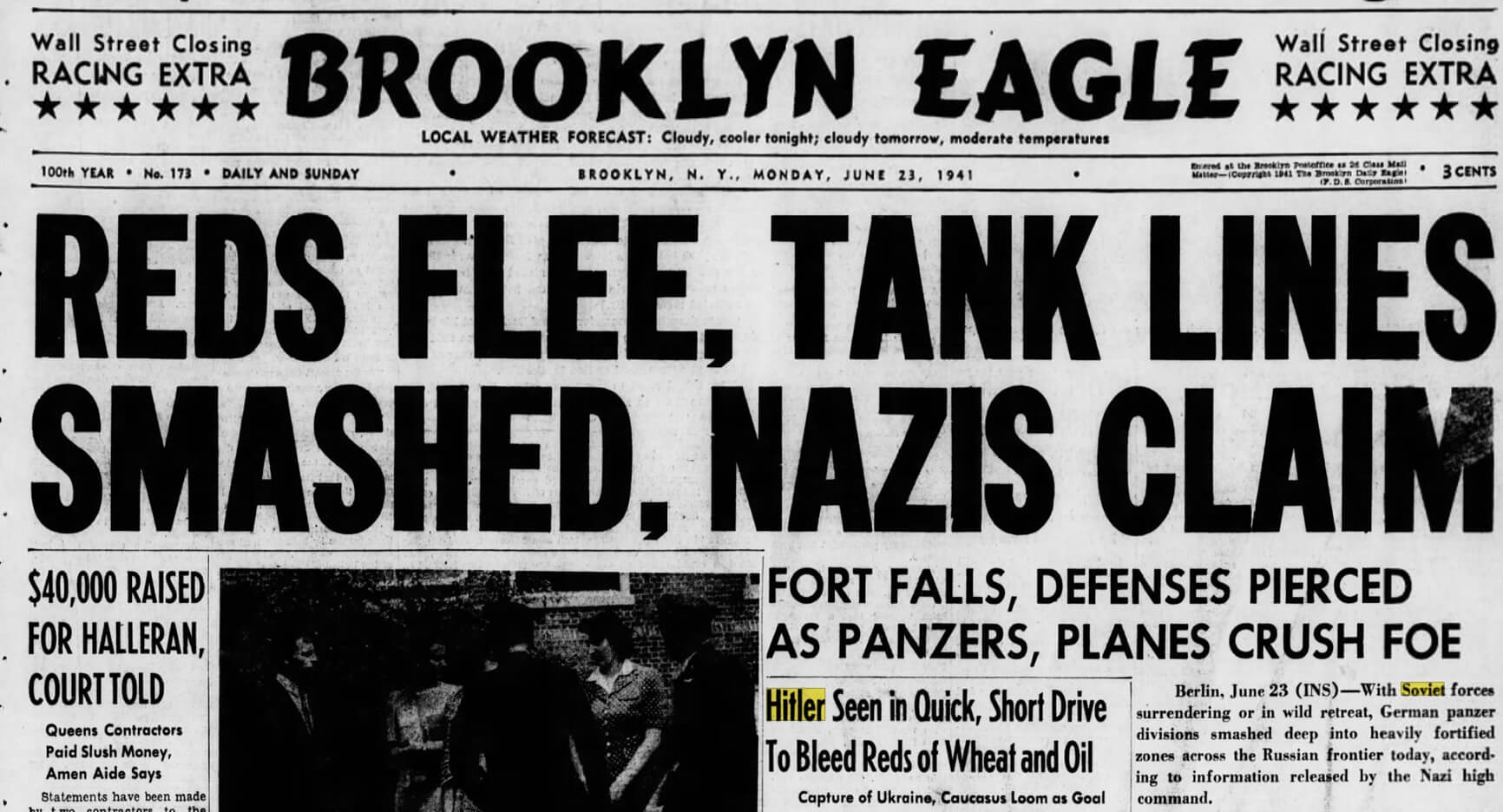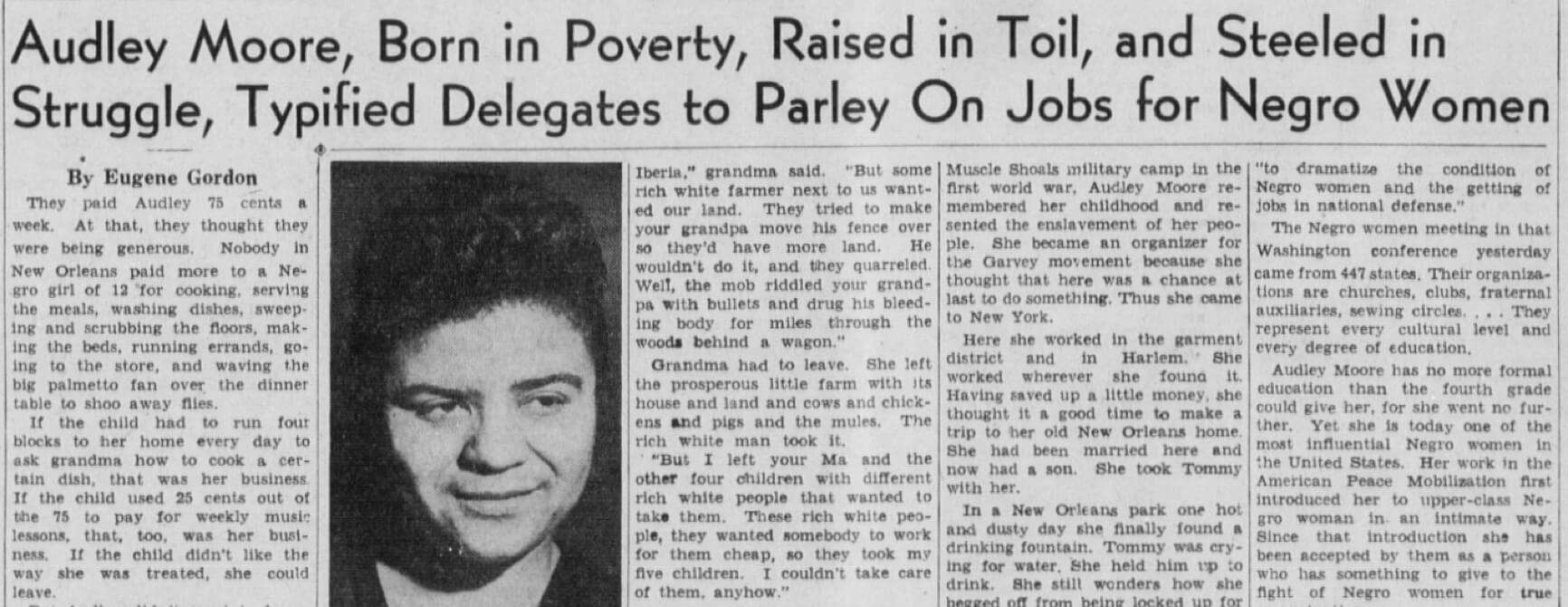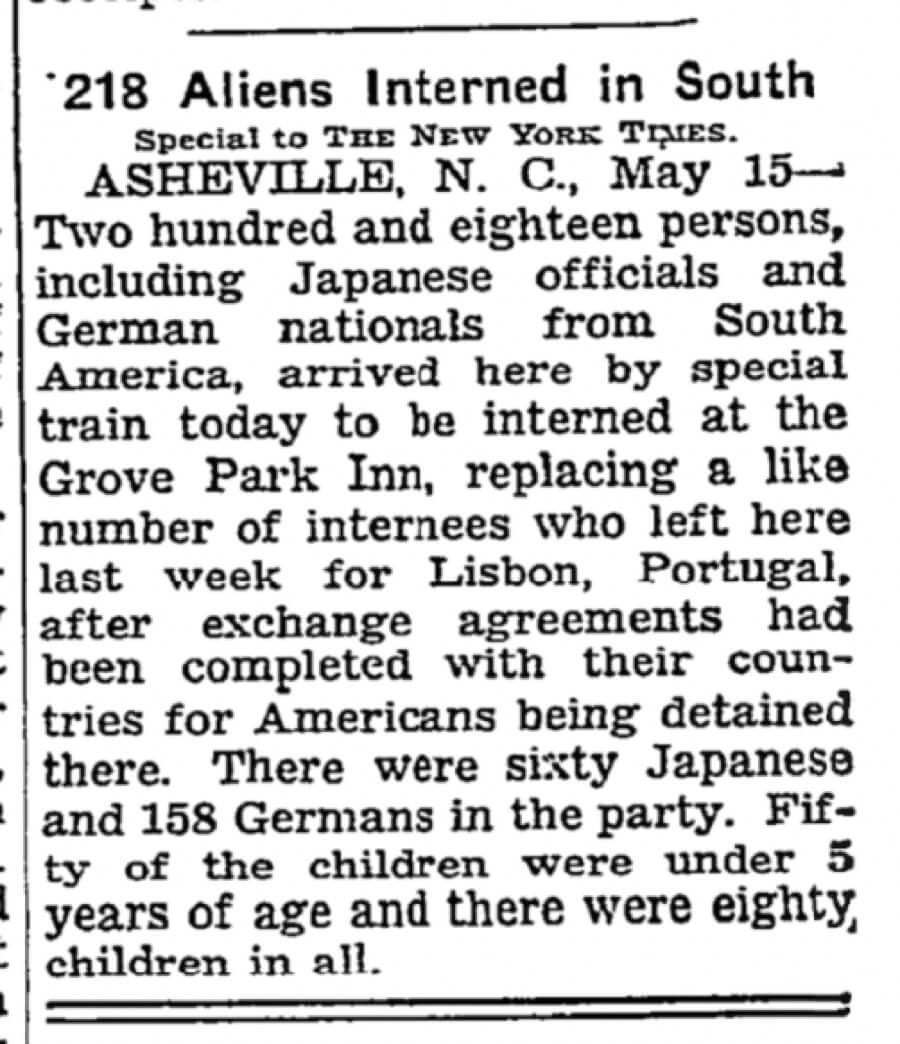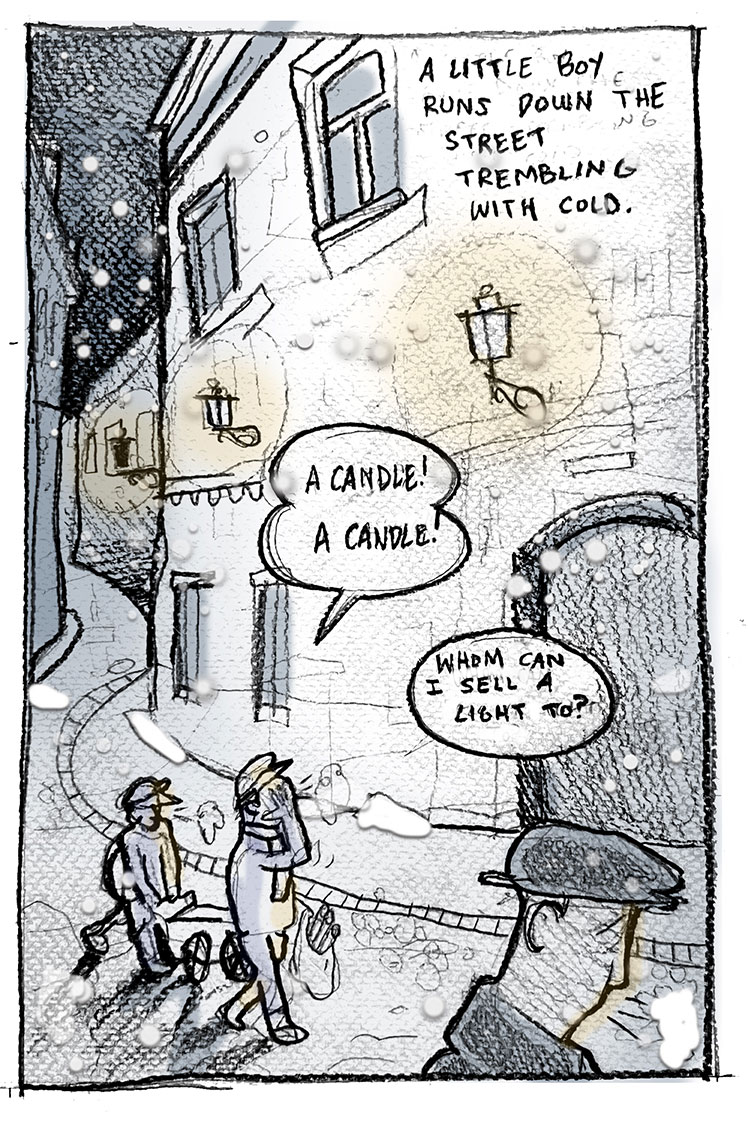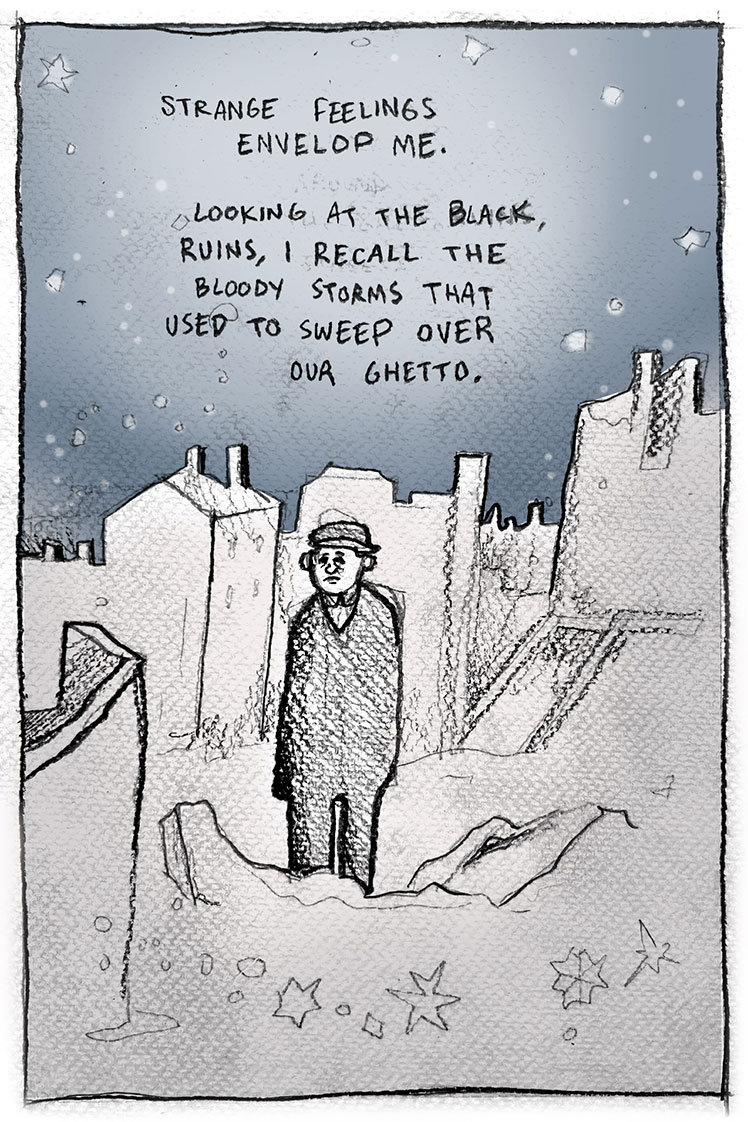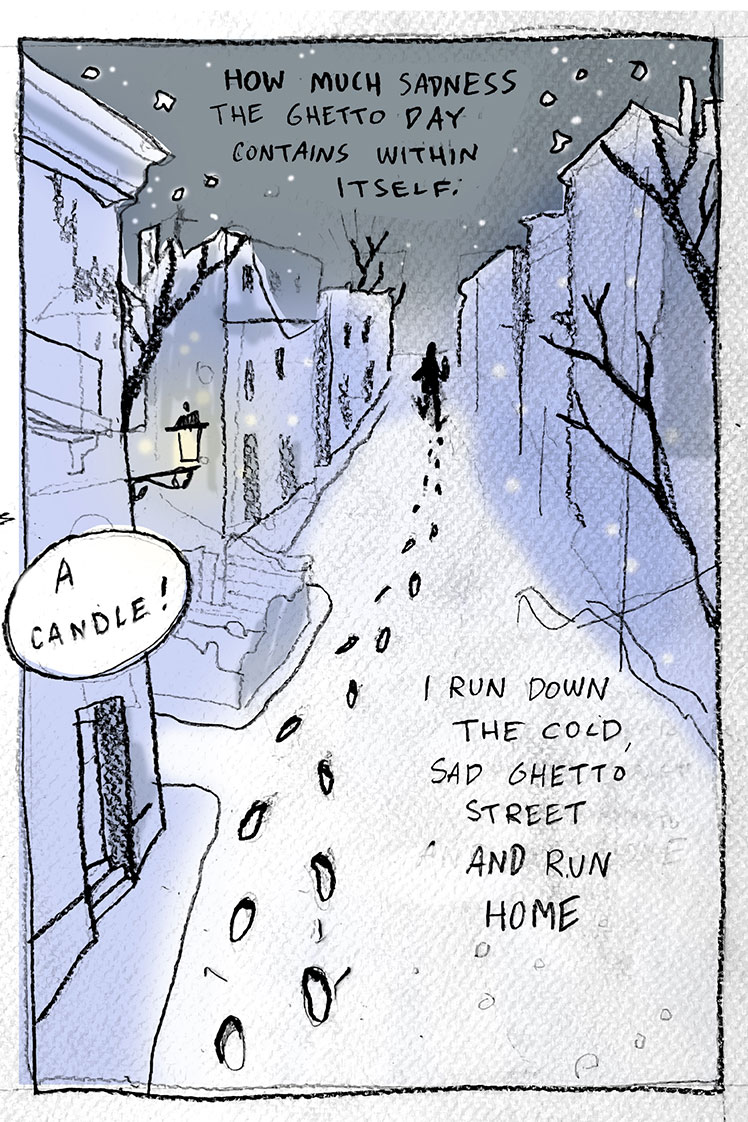The Quiet Period
After the many aktions in the Vilna Ghetto in 1941, only half of the ghetto’s initial population remained. Life then gradually became “normalized.” Little by little, Jews began to build a life within the ghetto. There were gatherings, schools, a library—all happening under the shadow of repression and terror from the Nazi regime. The German goal was not only to exterminate the Jewish people, but to kill Jewish culture altogether. Resistance through maintaining Jewish culture was another way to fight Nazi tyranny. Rudashevski chronicles many such acts of resistance in his diary, which we can see below by way of different experiences.
Environment
The atmosphere of the ghetto was decidedly grim. As its inhabitants tried to make homes in the ruins of a city that had once flourished with Jewish life, they feared that even if they survived German oppression, their lives would never be the same. They found themselves forced to follow the orders of the very people who wished them dead, fending off starvation and illness at every turn. To eke out a meager means of survival, they often had to resort to stealing or smuggling goods. The ghetto was a space of extreme desperation, and though many worked hard to improve the experience for themselves and others, its intrinsic nature remained a desolate one.
